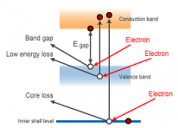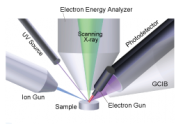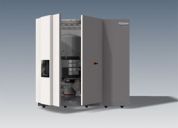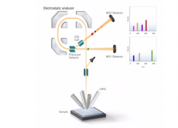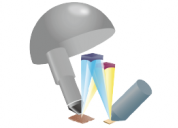Techniques
Techniques of Surface Analysis
Topics
2019.04.12
Reflection Electron Energy Loss Spectroscopy (REELS)
The REELS(Reflection Electron Energy Loss Spectroscopy)option has been added to the PHI 5000 VersaProbe III, which allows various optional configurations. REELS is a growing demand as an analytical method for obtaining information on the chemical and electronic states of the surface of various materials including carbon materials...
2019.03.18
Low Energy Inverse Photoelectron Spectroscopy (LEIPS)
Low Energy Inverse Photoelectron Spectroscopy (LEIPS) now available as a PHI VersaProbe III option! This provides unoccupied levels of the conduction band and enables direct measurements of electron affinities of samples such as organic semiconductor, organic light emitting device, organic-metal halide perovskite, etc.
2017.08.28
The PHI Quantes Equipped with Dual Scanning Monochromatic X-ray Source
The PHI Quantes is equipped with a dual scanning X-ray source composed of a hard X-ray source (Cr Kα) and a conventional soft X-ray source (Al Kα), which have different energy values. This state-of-the-art XPS instrument has a capability to analyze the very small area where the user is interested in and a large area of the uniform sample surface.
2017.07.27
What is Parallel Imaging MS/MS Option ?
The parallel imaging MS/MS option available for TOF-SIMS achieves high-speed and high- sensitive tandem mass spectrometry of the outermost surface of a material, thereby enabling high-speed measurement of both MS1 and MS2 at the same time under static-SIMS conditions.
2015.09.02
What is Hard X-ray Photoelectron Spectroscopy?
The basic principle of hard x-ray photoelectron spectroscopy is similar to that of general XPS, which irradiates excitation light on the sample surface and measures the kinetic energy of the photoelectrons emitted. While the photon energy of the monochromatic AlKα x-ray source most commonly used in traditional XPS instruments is 1486.6 eV, the photon energy of the excitation source used in hard x-ray photoelectron spectroscopy is 5 to 8 keV, more than triple.








